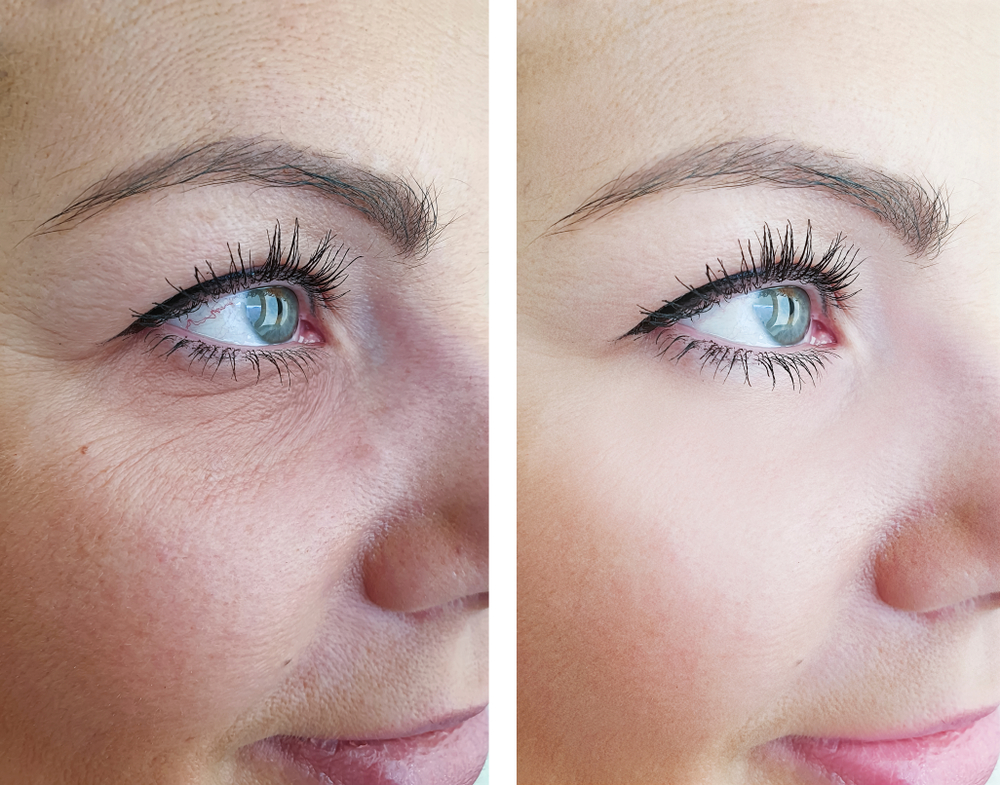As we get older, our skin begins to lose its elasticity and youthful appearance – especially the skin around our eyes. Excessive exposure to sunlight and other factors such as nutrition, genetics, alcohol consumption and smoking can accelerate the ageing process. Laser skin resurfacing, also known as a laser peel, is a very safe and effective technique used to improve the appearance of your skin by reducing the amount and severity of facial and eyelid wrinkles, while also correcting minor skin flaws.
CO2 Laser Skin Resurfacing can improve the appearance of:
- Scars from acne or chickenpox
- Liver spots
- Warts
- Aged and sun-damaged skin
- Skin that is non-responsive following a facelift
- Fine lines or wrinkles around or under your eyes (crow’s feet), mouth or forehead
- Your complexion
- Injury-induced superficial scars
There are two types of lasers commonly used for laser skin resurfacing; Erbium (a 2940 nm Er:YAG laser) or a 10,600 nm CO2 laser. CO2 laser skin resurfacing was first used in the 1990’s and has since been used to manage wrinkles, warts, scars, seborrheic keratitis and other skin conditions. The latest version of CO2 laser treatment techniques is fractional resurfacing which uses ultra-short laser beams in a scanning pattern. Fractional resurfacing has a short recovery period, produces fast results (two to three weeks) and helps remodel skin with very little damage.
Erbium laser resurfacing has fewer side effects and a quicker recovery period. This technique is typically used to remove superficial and moderately deep lines and wrinkles on the face; although it can also be used on your neck, chest, and hands.
With any type of surgical procedure there are risks involved. Risks following laser skin resurfacing may include:
- Excessive scarring and disfigurement
- Acne flares
- Swelling
- Cold sore reactivation (if you’ve experienced cold sores in the past, be sure to notify your surgeon)
- Prolonged red or pink skin that may take several months to disappear
- Bacterial infection
- Milia (very small, raised white bumps that may be removed by gentle cleaning with a washcloth)
- Hypopigmentation, especially in patients with darker skin.
Prior to receiving laser skin resurfacing treatment, your surgeon may start you on a series of skin treatments to prepare your skin for the procedure. These treatments may begin up to six weeks before your scheduled procedure.
The actual ‘laser skin resurfacing” procedure involves directing short, pulsating, beams of light onto the damaged areas of the skin. The pulsating beams of light cause the top layer of skin to peel off leaving the lower pink surface exposed. Your surgeon will numb the areas to be treated with a local anesthetic and may also sedate you. The entire procedure can take anywhere from 30 minutes up to two hours depending on how many areas being treated. Following surgery, the treated or exposed area is bandaged and cleaned 4-5 times a day.
You may begin using make-up in two weeks following CO2 laser surgery, with optimum results occurring within three to six months. Ebrium laser resurfacing recovery time lasts a full week. Because laser skin resurfacing is typically considered a cosmetic procedure, it may not be covered by your health insurance.
At Fort Lauderdale Eye Institute, our very own Dr. Gil Epstein specializes in laser skin resurfacing and is an active member of the American Society of Ophthalmic Plastic & Reconstructive Surgery. If you’d like to find out more about laser skin resurfacing and improving your appearance, make an appointment today.







